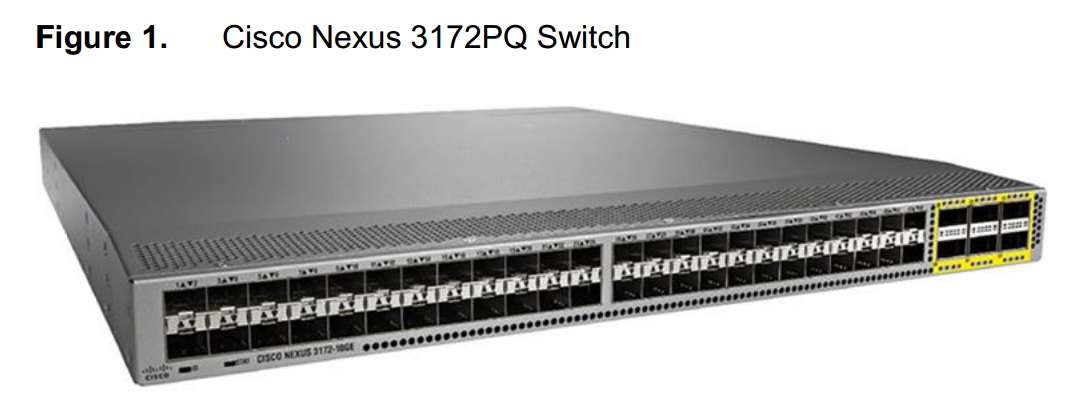
Introduced on September 30, 2013, this switch is an evolution of the Nexus 3000 which is built around the Trident+ switch chip. In what amounts to a breath of fresh air, Cisco explicitly says this is a Trident II product in figure 3 in their architecture paper. The discussion on page 8 hints at the fine details of the size of the dynamic pool. Some buffer space is reserved for each port and queue, least a packet arrive with no place to land it. This would lead to head-of-line blocking.
The size of the dynamic buffer pool is 12.2 MBytes less whatever is required for dedicated port buffers. The amount of dedicated buffer space depends on the number of ports. And the number of ports depends on whether some of the QSFP ports are running as four SFP+ ports. More ports means less memory in the dynamic pool. I think.
The 3132Q breaks one of the QSFPs into four SFP+ jacks. These ports are either/or with respect to the associated QSFP jack. Cisco can do this because of better packing of the QSFP jacks relative to other vendor offerings on the front panel leaves space for it.
Cisco has the 3172PQ with 48 SFP+ and 6 QSFP+ slots. It looks like the 12 of the QSFP+ ports have been presented as 48 SFP+ ports so that breakout cables are not required. It also uses a Trident II switch chip. Cisco uses Trident II switches along with some custom silicon in the Nexus 9000.
